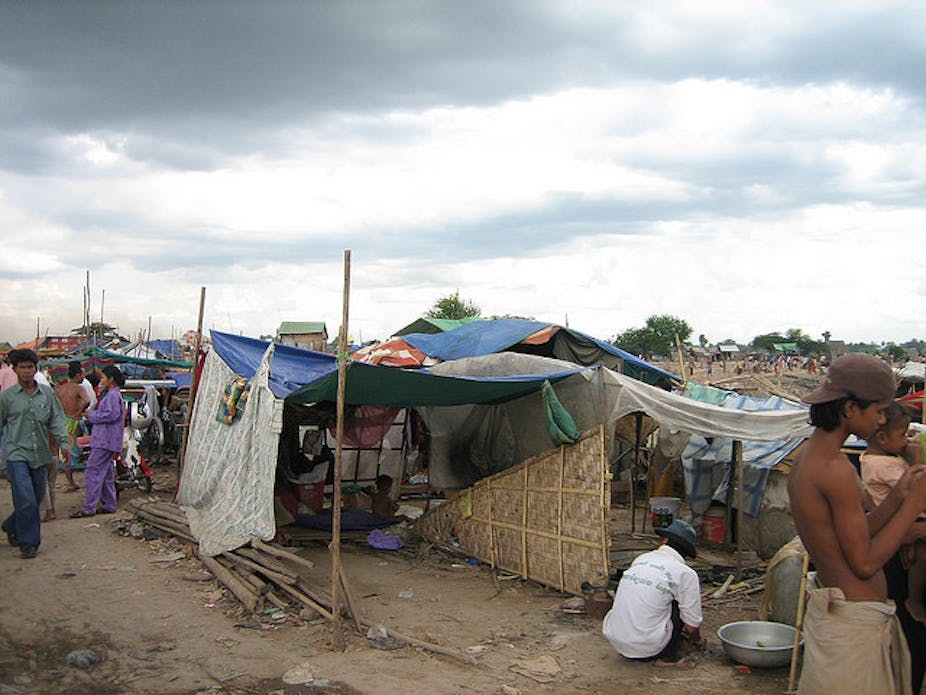HIV has claimed the lives of more than 30 million people since it emerged more than 30 years ago. But despite worldwide efforts to control the spread of the deadly disease, 2.6 million people contracted HIV in 2009 alone.
Public health agencies and non-governmental organisations (NGO) are making some progress in halting the spread of the disease but it’s ineffective to simply ask people to change their behaviours, when these are out of their control (in the case of drug addiction, for instance). We must look beyond traditional public health programs and consider innovative ways of containing the disease.
Engaging police officers, who have close contact with drug users and sex workers, in harm reduction programs is just one measure that could help make a difference in Asia, where five million people live with HIV.
Australian model
One of the mainstays of Australia’s public health triumph in stopping the HIV epidemic among injecting drug users over the past 25 years has been police operational support for harm reduction programs: needle and syringe programs, methadone, outreach services and drop-in centres.
This is not a new or an unusual phenomenon – police have always been key players in the maintenance of public health. Enforcement of seat belt and motorcycle helmet laws being two very obvious examples of this relationship.
Where police have been allies and supporters in the fight against HIV, as in Australia, the fight has been hugely more effective. But this rarely occurs in the developing world and in some developed countries, including the United States.
Current role of police
Police in most of Southeast Asia engage with marginalised groups vulnerable to HIV, especially people who inject drugs (PWIDs), sex workers, men who have sex with men (MSM), migrants, prisoners and detainees, but most of this contact is adversarial. Its impact has been to further criminalise behaviour and marginalise vulnerable individuals from their communities.
Police are often faced with competing priorities. They’re encouraged to arrest drug users in an attempt to stop drug use – or, more commonly to meet arrest quotas or quieten community outcry – rather than support interventions to stop HIV transmission, overdose and other harms.
Not being health or social workers, police usually respond to the demand that’s most pressing and in accordance with their culture. So they arrest the drug user, sex worker, or other marginalised individual, who is then driven underground, away from programs to help them protect themselves and others from HIV.
The young Vietnamese or Cambodian police officer on the beat is, on the one hand, part of a community which is sick of drug use, crime, stand-over tactics, violence and improperly discarded needles and syringes. All of this is associated with drugs and all of it police are expected to solve.
Responding to the same pressures, the officer’s superior may have imposed an arrest quota on him. He knows the targets will be out in force – the drug users need to feed their addiction, and the sex workers need their trade to make a living – so they are easy targets.
More iniquitously, the policeman is systematically underpaid and knows he can supplement his income to a living wage by squeezing those he arrests. After all, everyone else is doing it; petty corruption is everywhere.
Working with police
Our team at the Law Enforcement and Harm Reduction Network at the Nossal Institute has been investigating programs to engage Australian police and public health experts to work with Southeast Asian police forces. Our aim has been to change police cultures so officers see marginalised communities vulnerable to HIV infection as needing protection and support.
As with any other group, the most effective way of doing this is peer education. In these partnerships, Australian police assist their Southeast Asian colleagues to devise ways to achieve local policing goals more effectively, while at the same time protecting the whole community.
Rather than go after drug users and sex workers, the program educates local officers about effective ways to go after drug distributers and human traffickers. With evidence-based policing, officers learn to break the cycle of low-level arrests and target the criminals who grow fat from the drug and sex trades.
Other police-community liaison programs exploring broader roles and partnerships for police, such as drug diversion programs, neighbourhood justice centres and drug courts, are also being trialled in Southeast Asia.
But some barriers remain, such as ensuring police wages are high enough that officers don’t have to be part of a culture of corruption. There is also demand for welfare, drug treatment and mental health care that is far from being met.
It’s too early to say how much of an impact these programs are having on changing the culture of police interactions in Southeast Asia. But police chiefs are beginning to acknowledge that their officers have a role in protecting life and curtailing HIV, as well as helping to divert drug users into the treatment system.

